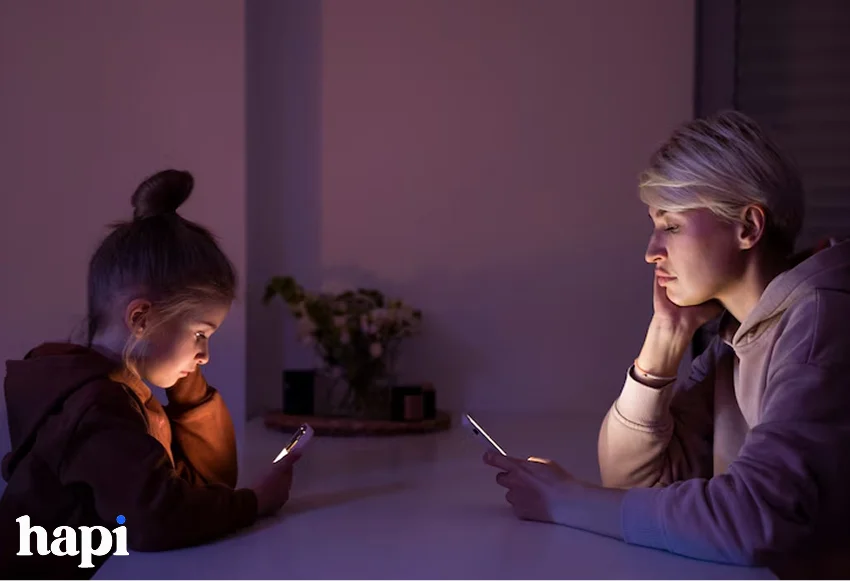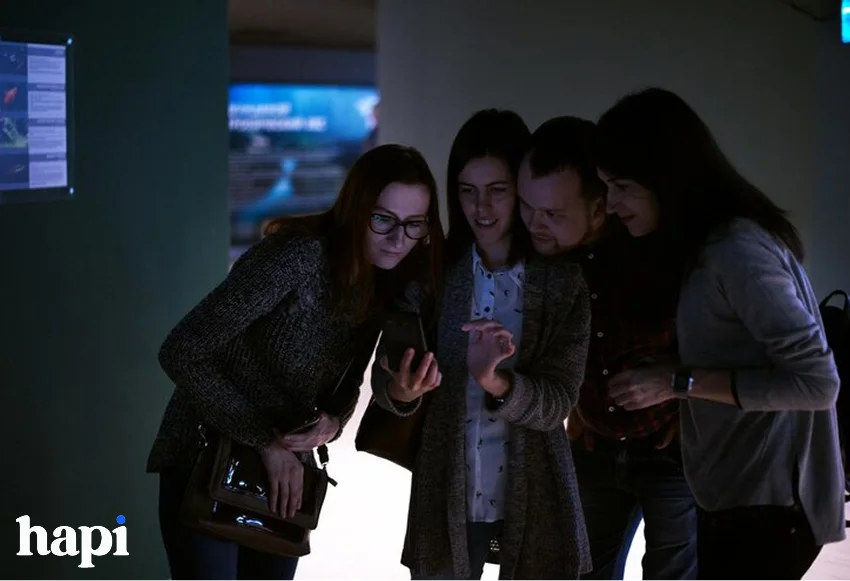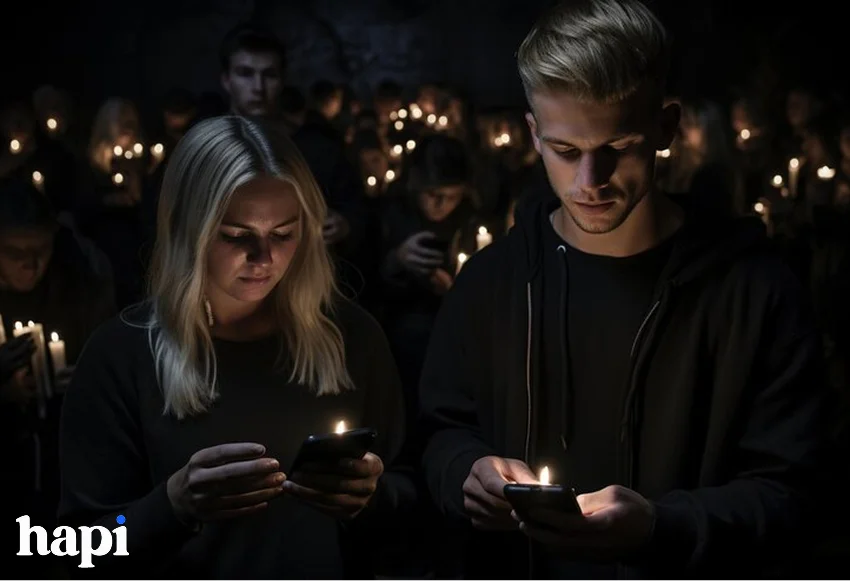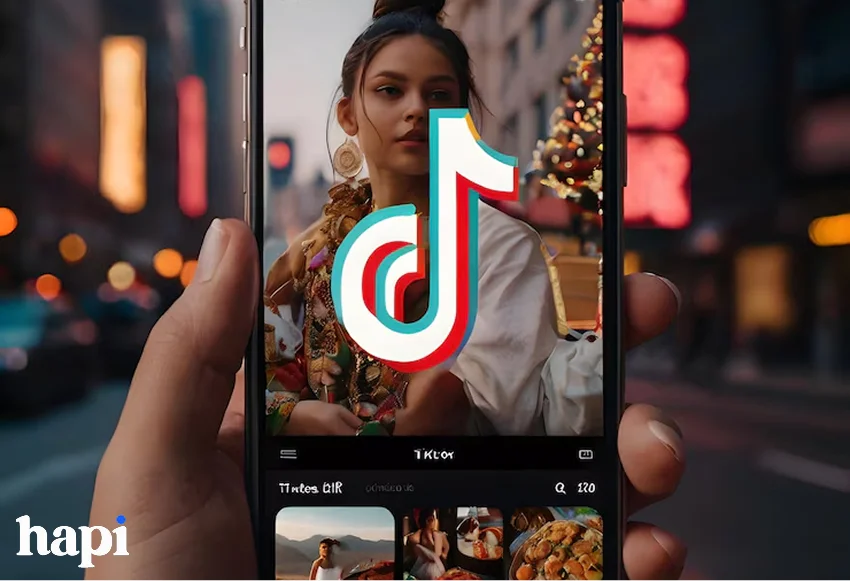
Do you monitor all of your social media activity? The answer is unquestionably no if dark social is not considered.
Imagine if I told you that up to 84% of consumers share content through platforms that you most likely don’t keep an eye on. The invisible but significant effect of social sharing that most marketers are unaware of is the reality of dark social.
In the current digital environment, knowing the source of your visitors is not only beneficial but also necessary. However, when it comes to private sharing platforms, a lot of marketers still have a big blind spot.
This post will explain dark social, explain why it’s important for your business, and offer doable tactics to begin attracting this group of audience. The main goal is to bring attention to the negative aspects of social sharing.
Introduction to Dark Social Media

It’s possible that you have encountered dark social situations without even recognizing it. Have you ever copied a link and sent it to a buddy over WhatsApp? That’s dark social in action, and it occurs on the internet billions of times every day.
What Exactly Constitutes Dark Social Sharing?
Web traffic originating from private sharing channels—locations where traditional analytics tools are unable to pinpoint the original source—is referred to as “dark social.”
• Direct messages in apps like WhatsApp, Telegram, or Facebook Messenger
• Email sharing
• Text messages (SMS)
• Native mobile apps
• Secure browsing sessions
• Copy-and-paste link sharing
When someone discovers your content and shares it through these private channels, the recipient who clicks appears in your analytics as “direct traffic”—even though they didn’t manually type your URL. This misattribution creates a significant gap in understanding how people actually find your content.
The Origin Story of the Dark Social Term
Alexis Madrigal, a senior editor at The Atlantic at the time, first used the term “dark social” in 2012. Madrigal found that a significant percentage of social referrals were not correctly assigned to their sources in his seminal paper.
What began as a comment regarding a technical analytics constraint has developed into a recognized issue that marketers need to deal with. According to Madrigal, up to 69% of social recommendations may come from dark social, a percentage that has only increased as messaging apps have become more widely used.
How Dark Social Differs from Traditional Social Media
Traditional social sharing happens in public. Analytics software can determine the source of traffic when someone shares your link on LinkedIn or Twitter. The process is transparent; engagement, influencers, and performance can all be tracked.
Dark social, by contrast, happens in private conversations. These interactions are:
• Invisible to standard analytics
• Highly personal and trusted
• Often more influential in decision-making
• Increasingly dominant as privacy concerns grow
This privacy makes dark social powerful. People tend to share more authentic recommendations when speaking directly to friends rather than broadcasting to their entire network. As a result, dark social referrals often carry more weight in purchasing decisions than public endorsements.
Understanding the Scale of Dark Social Traffic

The numbers behind dark social are staggering—and they reveal why ignoring this channel is no longer an option for serious marketers.
5 Eye-Opening Statistics About Dark Social Sharing
1. According to RadiumOne research, approximately 84% of consumers’ outbound sharing occurs via dark social channels.
2. GetSocial found that dark social sharing can drive up to 3x more clicks than public social media platforms for certain content types.
3. A ShareThis study revealed that content shared through dark social channels has a 3-8x higher conversion rate than content shared on public networks.
4. Mobile devices account for over 62% of all dark social sharing, according to RadiumOne.
5. Messaging apps now have more active users than traditional social networks—WhatsApp and Facebook Messenger alone have over 3 billion monthly active users combined.
Which Content Types Drive Most Dark Social Traffic?
Not all content is shared equally through private channels. Research shows clear patterns in what people prefer to share privately versus publicly:
Products and shopping content sees up to 70% of shares happen via dark social channels. People often send specific products to friends when seeking opinions before purchasing.
Health and financial content generates significant dark social sharing due to its personal nature. Few want to publicly share their medical concerns or investment strategies.
Travel recommendations and food recipes dominate dark social, with friends directly sharing vacation ideas or favorite dishes.
News articles—especially controversial topics—often move through private channels as people become more cautious about their public digital footprint.
Understanding these patterns helps you predict which of your content types might be generating uncredited dark social traffic.
Why Dark Social Metrics Often Go Unmeasured
Most analytics platforms weren’t built with dark social in mind. When someone pastes your URL into WhatsApp, the recipient who clicks appears as “direct traffic”—indistinguishable from someone who typed your address directly into their browser.
This technical limitation creates several challenges:
• Attribution gaps make ROI calculations inaccurate
• Content performance may be severely underreported
• Marketing decisions get made with incomplete data
• Budget allocations might not reflect actual channel effectiveness
The measurement problem is compounded by increasing privacy regulations and browser policies that restrict tracking capabilities. As third-party cookies phase out, understanding dark social becomes even more crucial.
How Dark Social Impacts Marketing Strategy

The invisible nature of dark social doesn’t diminish its importance—it amplifies it. This hidden traffic represents some of your most valuable engagement.
The Hidden Influence on Consumer Purchase Decisions
Studies regularly demonstrate that word-of-mouth recommendations are more reliable than advertisements. Personal recommendations are the most trusted kind of advertising, according to Nielsen, which shows that 83% of customers believe suggestions from people they know.
Dark social puts this trust principle on steroids. When someone sends a direct message with your product link, they’re effectively giving a personal endorsement. This carries several implications:
• Higher conversion rates from dark social traffic
• Stronger purchase intent from visitors arriving via private recommendations
• Greater trust associated with your brand when introduced through personal channels
• More qualified leads entering your funnel
This dynamic means dark social often influences buying decisions at a disproportionate rate compared to public social sharing—even though it remains invisible in standard attribution models.
Why Traditional Attribution Models Are Failing Marketers
Most attribution models weren’t designed with dark social in mind. They typically focus on:
• Last-click attribution that ignores the sharing journey
• Public social metrics that capture only a fraction of engagement
• Direct traffic as a catchall category that obscures valuable insights
• Conversion paths that miss crucial private sharing touchpoints
This creates a dangerous disconnect between perceived and actual marketing performance. Channels generating substantial dark social sharing might appear underperforming in your analytics, leading to potential budget cuts for your most effective content.
Case Studies: Brands Successfully Navigating Dark Social
Several forward-thinking brands have developed strategies to capture and leverage dark social traffic:
Adidas created a WhatsApp group strategy for their Tango Squad campaign, establishing private communities for football enthusiasts. This strategy increased conversions from these active communities by 21% and produced 1,400 pieces of content that were privately shared among participants.
BuzzFeed increased overall content sharing by 15% and increased engagement rates from dark social traffic by redesigning their mobile sharing choices to prominently emphasize messaging apps.
By using tracking parameters and shortened URLs on all product pages, ASOS was able to identify an extra 18% of their social media traffic that had previously been classified as “direct.”
This revealed that private messaging apps were their second-largest source of social traffic.
These cases demonstrate that brands actively addressing dark social gain significant competitive advantages in both measurement accuracy and engagement opportunities.
Top Dark Social Channels Marketers Should Monitor

Understanding where dark social sharing happens is the first step toward developing strategies to measure and influence it.
Messaging Apps Dominating Private Sharing Landscapes
Messaging apps have exploded in popularity, becoming the primary digital communication channels for billions of users:
WhatsApp leads global messaging with over 2 billion users. It is a dark social force, especially for B2C firms, due to its easy link-sharing features and broad global popularity.
Facebook Messenger, which has almost 1.3 billion users, continues to dominate the US market. It is especially crucial for firms that have previously made investments in Facebook because of its integration with the Facebook ecosystem.
With its rapid growth, Telegram now has over 700 million users. It is particularly well-liked for sharing delicate or controversial topics because of its emphasis on confidentiality and anonymity.
With more than 1.2 billion users, WeChat is the most popular app in China. Its comprehensive ecosystem means Chinese consumers often discover and share products entirely within the app.
Each platform has unique demographics and sharing behaviors that may align differently with your target audience. Understanding which apps your customers prefer helps focus your tracking efforts.
Email’s Persistent Role in Dark Social Communication
Despite being one of the oldest digital communication channels, email remains a critical dark social medium:
• 40% of consumers report regularly sharing content via email
• Email sharing tends to include longer, more detailed content
• B2B content sees particularly high email sharing rates
• Professional audiences often prefer email for sharing work-related content
Email’s staying power in dark social sharing comes from its universal adoption, professional acceptability, and the thoughtful nature of composed messages. Don’t overlook this channel when developing your dark social strategy.
SMS and Mobile Messaging Traffic Analysis
Text messaging remains a significant dark social channel, particularly for quick, casual sharing:
• 97% of smartphone users text regularly
• SMS has a 98% open rate—far higher than email
• Links shared via text are typically opened within minutes
• Mobile-first content sees higher SMS sharing rates
However, its basic nature makes it one of the hardest dark social channels to track without implementing specific shortened links.
Proven Methods to Track Dark Social Traffic

While dark social presents measurement challenges, several practical approaches can help illuminate this hidden traffic.
Implementing Shortened URLs with Tracking Parameters
Custom URL shorteners provide one of the most effective methods for tracking dark social sharing:
Create branded short links using services like Bitly, Rebrandly, or your own custom solution. These generate trackable links that maintain attribution regardless of where they’re shared.
Add UTM parameters to differentiate between sharing channels. Parameters like utm_source=newsletter or utm_medium=whatsapp help categorize traffic correctly.
Incorporate campaign-specific tags to monitor which content generates the most dark social engagement. This helps identify your most shareable assets.
Analyze click data from shortened URLs to reconstruct sharing patterns and identify which platforms drive the most valuable traffic.
Using Click-Based Attribution Tools Effectively
Advanced attribution tools can help separate genuine direct traffic from dark social referrals:
Tools like GetSocial, Po.st, and ShareThis offer specialized dark social tracking capabilities by monitoring how content moves across platforms—even through private channels.
Implement click path analysis to identify patterns suggesting dark social referrals. For example, direct traffic landing directly on deep content pages (rather than your homepage) typically indicates dark social sharing.
Deploy “fingerprinting” techniques that analyze user behavior patterns to distinguish between truly direct visitors and those arriving via shared links.
These tools require proper implementation but can reveal significant insights about previously invisible traffic sources.
How Share Buttons Can Illuminate Dark Social Data
Strategic sharing options do double duty—they encourage sharing while capturing data:
Add messaging app buttons (WhatsApp, Messenger, Telegram) alongside traditional social sharing options. Each click provides valuable data on sharing intent, even if you can’t track the recipient’s actions.
Implement “copy link” buttons that automatically add tracking parameters when users copy your URL. This simple technique can significantly increase your ability to trace dark social sharing.
Position these options prominently on mobile, where dark social sharing predominantly occurs. Mobile-optimized sharing buttons can increase tracked sharing by up to 35%.
While share buttons don’t capture all dark social activity, they provide valuable directional data while making sharing easier for users—a win-win approach.
Optimizing Content for Dark Social Sharing

The next step after realizing the significance of dark social is to produce content that is especially made to flourish in secret sharing settings.
Creating Highly Shareable Content for Private Channels
Private sharing has different motivations than public posting. People share privately when content is
Personally relevant to the recipient. Content that solves specific problems or aligns with known interests gets shared in direct messages. Create targeted content addressing specific needs rather than generic information.
Emotionally resonant but potentially controversial. Content that provokes strong reactions often moves to private channels when people feel uncomfortable sharing publicly. Addressing meaningful topics with nuance can drive significant private sharing.
Exclusive or provides insider information. People love being the first to share valuable information with friends. Creating content that feels exclusive or provides special access encourages private sharing.
Practically useful in a specific context. “You should see this” messages flourish when content provides immediate utility. Develop comprehensive resources that solve real problems.
Design Elements That Encourage Personal Sharing
Visual design significantly impacts sharing behavior:
Mobile-optimized images and layouts are essential since most dark social sharing happens on smartphones. Ensure your content looks great on small screens.
Clear, compelling headlines that communicate value drive sharing. Test different headline approaches to see which generates more engagement.
Strong visual elements (infographics, charts, original images) increase share-worthiness. Visual content is shared 40% more often than text-only content.
Pull quotes and highlighted statistics make content more scannable and shareable. These elements make it easy for readers to identify value worth sharing.
Remember that content shared via dark social often arrives without your site’s context or branding, so individual pieces should stand alone effectively.
Content Length and Format Considerations
Different content formats perform differently in dark social channels:
Long-form, comprehensive resources generate significant dark social sharing as valuable reference materials. These become go-to resources that people save and share repeatedly.
List-based articles perform exceptionally well in private sharing, with clear, scannable value propositions. The structure makes benefits immediately apparent.
Interactive tools and calculators see high dark social sharing rates as people send useful resources to friends facing specific challenges. These practical assets often outperform standard content.
Product pages with strong visual elements and clear information become dark social currency when people seek opinions before purchasing. Optimize these pages for sharing with visible share buttons.
Track which formats generate the most dark social traffic for your specific audience and double down on these high-performing structures.
Building a Dark Social-Ready Marketing Strategy

Incorporating dark social into your broader marketing approach requires systematic changes to how you plan, execute, and measure campaigns.
Integrating Dark Social into Your Attribution Model
Revamping your attribution approach is essential for dark social success:
Develop a modified direct traffic model that differentiates between likely dark social traffic and true direct visits. Flag direct traffic to deep pages as potential dark social referrals.
Implement “possession” attribution that credits channels generating shareable content, even without direct tracking. This acknowledges content that drives sharing behavior.
Create custom reporting dashboards that highlight potential dark social impact rather than burying it in direct traffic metrics. Visualization helps teams understand its importance.
Establish sharing metrics beyond public platforms. Track copy-link actions, sharing button usage, and other indicators of private sharing intent.
These adjustments help create a more accurate picture of how users actually discover and engage with your content.
Balancing Public and Private Channel Engagement
Effective strategies don’t choose between public and private channels—they leverage both:
Develop content distribution plans that deliberately seed conversations in both public and private spheres. Some content performs better in each environment.
Create channel-specific content variations optimized for different sharing contexts. Small adjustments can significantly impact performance across channels.
Implement cross-channel measurement to understand how public and private sharing interact. Often, content initially discovered on public platforms gets reshared through dark social channels.
Test different call-to-action approaches to encourage appropriate sharing behavior based on content type. Some content benefits from public advocacy while other pieces work better in private conversations.
This balanced approach ensures you maximize visibility while capitalizing on the higher trust associated with private sharing.
Future-Proofing Your Strategy Against Privacy Changes
The digital landscape continues to evolve toward greater privacy protection:
Prepare for cookie deprecation by developing first-party data collection strategies. Build direct relationships with audiences that don’t rely on third-party tracking.
Explore contextual targeting approaches that align content with user interests without requiring personal data. This approach works effectively even without detailed tracking.
Invest in community building to create environments where sharing happens naturally. Engaged communities generate substantial dark social activity.
Stay informed about emerging technologies and platforms where private sharing occurs. New channels constantly emerge, each with unique sharing dynamics.
These forward-looking approaches ensure your dark social strategy remains effective even as tracking capabilities evolve.
Conclusion: Embracing the Dark Social Opportunity
Dark social isn’t just a measurement challenge—it’s a massive opportunity hiding in plain sight. While many marketers continue focusing exclusively on public social metrics, the real conversation about brands increasingly happens in private channels.
Key Takeaways for Modern Digital Marketers
The majority of social sharing is dark social, which is mainly undetectable by conventional analytics. For intelligent marketers, this presents both opportunities and challenges.
Private recommendations carry exceptional weight in consumer decision-making. Content that reaches audiences through dark social often converts at significantly higher rates than other channels.
Practical tracking strategies—including shortened URLs, specialized attribution tools, and strategic sharing buttons—can illuminate previously invisible traffic sources and provide valuable insights.
Content specifically optimized for private sharing environments performs substantially better in dark social channels. Understanding the unique psychology of private sharing should inform your content development.
Next Steps to Improve Your Dark Social Strategy
Begin by auditing your direct traffic to identify potential dark social patterns. Look for direct visits to deep pages that likely came from shared links.
Implement at least one tracking mechanism discussed in this article. Start with sharing buttons for messaging apps and a consistent shortened URL strategy.
Develop content specifically designed for private sharing, focusing on personal relevance, emotional resonance, and practical utility.
Review your attribution model to ensure it acknowledges the role of dark social in your customer journey. Even estimated attribution is better than ignoring this critical channel.
You’ll outperform rivals who are still using analytics with major blind spots by implementing these practical measures.
The companies that comprehend and welcome the entire range of social sharing—in both public and private settings—will be the ones that thrive in the digital world of the future. Although it can be difficult to quantify precisely, dark social has an impact on economic outcomes that cannot be disregarded.
#darkscocialstrategy #digitalmarketing

